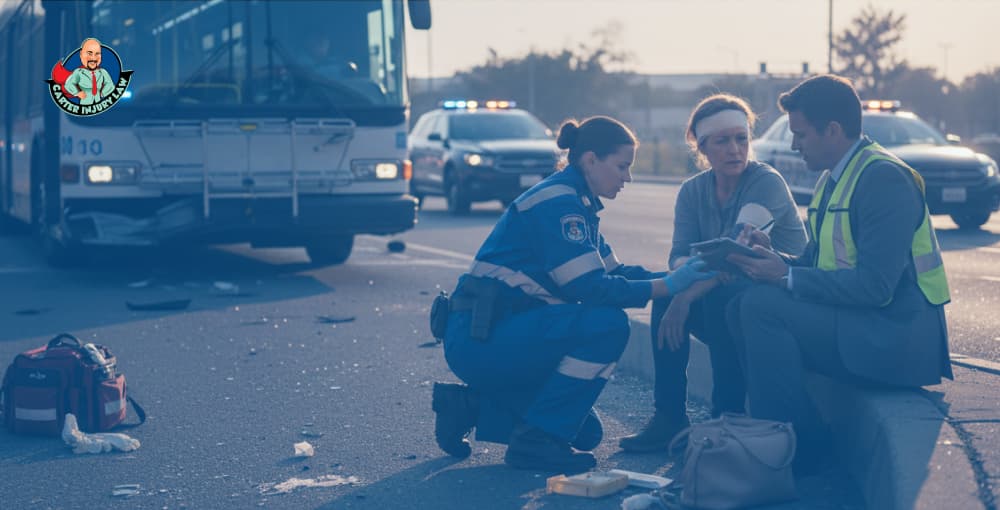There’s a quiet kind of uncertainty that comes after the storm. You’ve fought your case, stood your ground, and won. But now what? How are personal injury settlements paid out, really? It's a quiet question that just sits there, waiting for clarity. Because winning a case is one thing. Getting paid is another.
Most people imagine that a check just arrives one day. No strings, no steps. However, the truth is more nuanced. Your settlement is more than just a number; it is a process that breaks down what you owe, what is deducted, and what ultimately ends up in your hands. And understanding that process means understanding your power.
Let’s walk through it together.
1) What Are Personal Injury Settlements?
A personal injury settlement is the compensation you receive after you’ve been hurt due to someone else’s actions. Think of it as a way to make up for the physical, emotional, and financial toll an injury has taken on your life. It's not just about paying for your medical bills; it's about addressing lost wages, pain and suffering, and other damages that affect your well-being.
There are a few types of settlements that may come up in a personal injury case. One common option is the lump sum settlement. This is typically how most personal injury cases are resolved. Essentially, you receive a single, one-time payment for everything your case covers—from your medical bills to any wages you've lost due to the injury.
Another type is a structured settlement, where payments are made over time, but we won’t get into that today. For now, we’ll focus on the lump sum, because it’s the most straightforward and the one you’ll likely encounter. The beauty of this option is its simplicity: you get a full settlement amount in one check, which can be a relief after a long process.
2) The Most Common Settlement Option: Lump Sum

The lump sum settlement is by far the most common option you’ll come across. It’s straightforward, easy to understand, and typically the best choice for most cases. In simple terms, it means you receive a one-time payment that covers everything in your case.
For example, if your settlement is $100,000, that amount is meant to cover your injuries, damages, and lost wages. Everything you’ve gone through—from the moment of the accident to the ongoing impact on your life—is included in that lump sum.
"The lump sum is paid by the insurance company or the at-fault party."
"That $100,000 is yours to use as you need, after deductions for fees, costs, and medical bills."
This makes the lump sum a practical option, allowing you to manage the funds however you see fit, whether that’s paying for medical expenses, covering lost income, or simply getting back to normal life.
Watch the short video below where Rob Johnson breaks down exactly how a lump sum settlement works and what it means for your recovery:
3) What Comes Out of the Lump Sum?
When you receive your lump sum settlement, it’s important to understand that not all of it will be in your pocket right away. There are a few things that need to be covered first, but don’t worry, we’re here to help you navigate the process.
Attorney Fees
The first thing that will be deducted is your attorney’s fees. At Carter Injury Law, we work on a contingency fee basis, which means we only get paid if you win. These fees are typically a percentage of the settlement, and they are taken out of the lump sum before anything else.
Costs Associated with the Case
In addition to attorney fees, there are certain costs that come up during the case. This might include court filing fees, expert witness costs, or other expenses related to preparing your case. These costs will also come out of your settlement before you see the final amount.
Medical Bills
One of the things that sets us apart at Carter Injury Law is our approach to medical bills. We don’t just leave you to deal with these bills on your own. We work directly with your medical providers to reduce those costs, helping you keep more of your settlement in the end. This is something we’re very proud of and believe it’s one of the ways we truly add value for our clients.
We understand these numbers, these deductions—they can feel like too much all at once. But that’s why we’re here. While the system has its steps, its fees, its bills, none of it should weigh heavier than your healing. We take care of the details, the paperwork, the quiet negotiations behind the scenes. So you can do what matters most—breathe, recover, move forward.
4) The Closing Statement: What to Expect

Once all the deductions have been made from your lump sum settlement, the next step is signing the closing statement. This is an important part of the process that ensures everything is accounted for and clearly outlined.
What Is a Closing Statement?
A closing statement is essentially a breakdown of your settlement. After we’ve covered all the necessary deductions—attorney fees, case costs, and medical bills—this document will show you exactly what’s been paid out and what remains for you. Think of it as the final summary of how the lump sum has been distributed.
Breakdown of the Closing Statement
The closing statement will list all of the payments that were made throughout the process, giving you a clear view of where your settlement money has gone. It will also show any remaining balance after all fees and expenses have been deducted, leaving you with a transparent understanding of your net settlement.
The Final Check: Your Net Settlement
Once everything is finalized, what’s left over is the final check you receive—the net settlement. This is the amount you’ve been working toward, the money that is yours after everything has been taken care of. It’s the payout you’ll use to cover your ongoing needs and start getting back to normal life.
Our Other Relevant Blogs You Would Find Useful:
Why Local Tampa Attorney is Vital for Winning Your Personal Injury Case
What Does Full Coverage Mean in Florida? Understanding the Misconception
How Long Will Your Personal Injury Case Take? Carter Injury Law Reveals the Truth
5) The Final Step: Release and Getting Paid
After everything is settled, there are just a few final steps before you get your check. While it’s the last part of the process, it’s crucial to understand what happens at this stage.
Release of Claims
The final step involves signing a release of claims. This is a legal document that clears the insurance company and the at-fault party from any future claims related to your case. Once you sign it, you're officially releasing them from any further liability. It’s an essential part of closing out the case, but don't worry—we’ll walk you through it, so you fully understand what you’re signing.
Receiving the Check
Once the release is signed and all the details are in order, you’ll receive the final settlement amount—minus the previously discussed deductions. This is the check you’ve been waiting for, the net settlement, which you can use as needed for your recovery, future expenses, or anything else that will help you move forward.
Let’s Talk, If You’re Ready

Sometimes the hardest part isn’t the injury itself, it’s what comes after. The paperwork, the calls, the waiting. The unknown. But you don’t have to sit in that uncertainty alone.
If you’re wondering what this all means for your case, or just need someone to walk you through it, we’re here. You can find us at CarterInjuryLaw.com or call us at 813-922-0228. No pressure—just answers, and a plan if you want one.
Thanks for spending a few minutes with us. When you’re ready, we’ll be here to help you take that next step forward.













